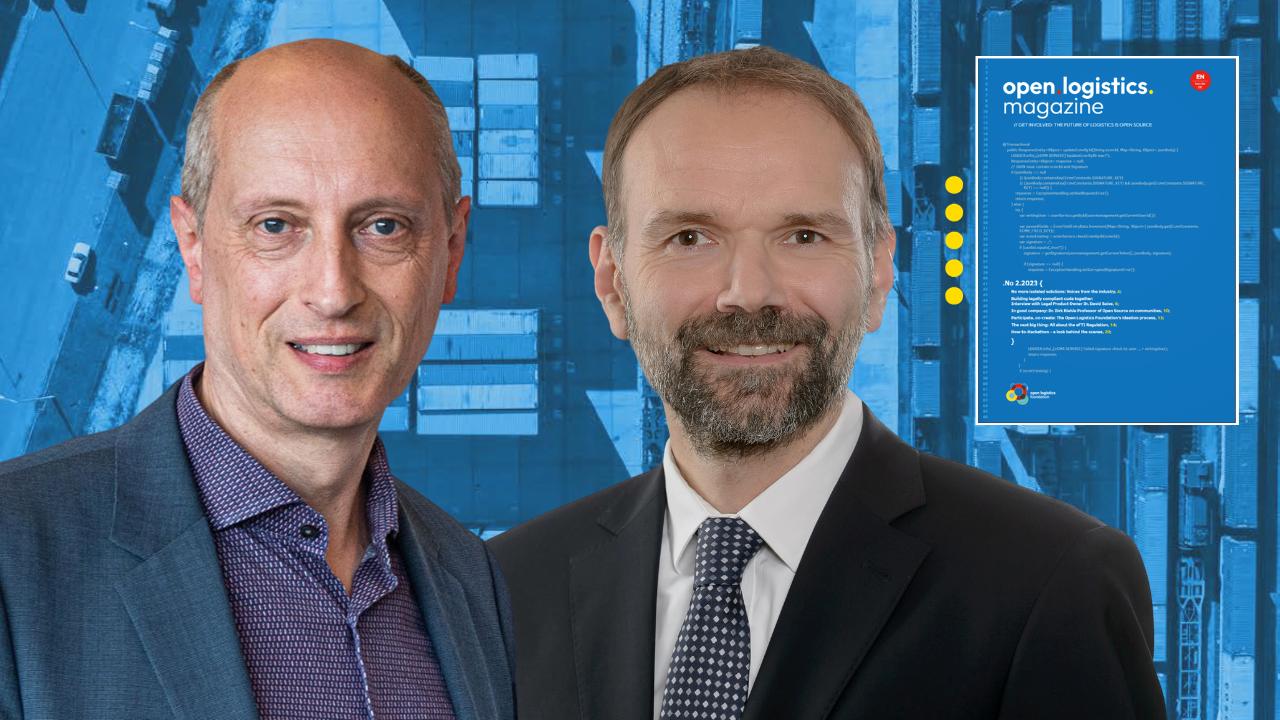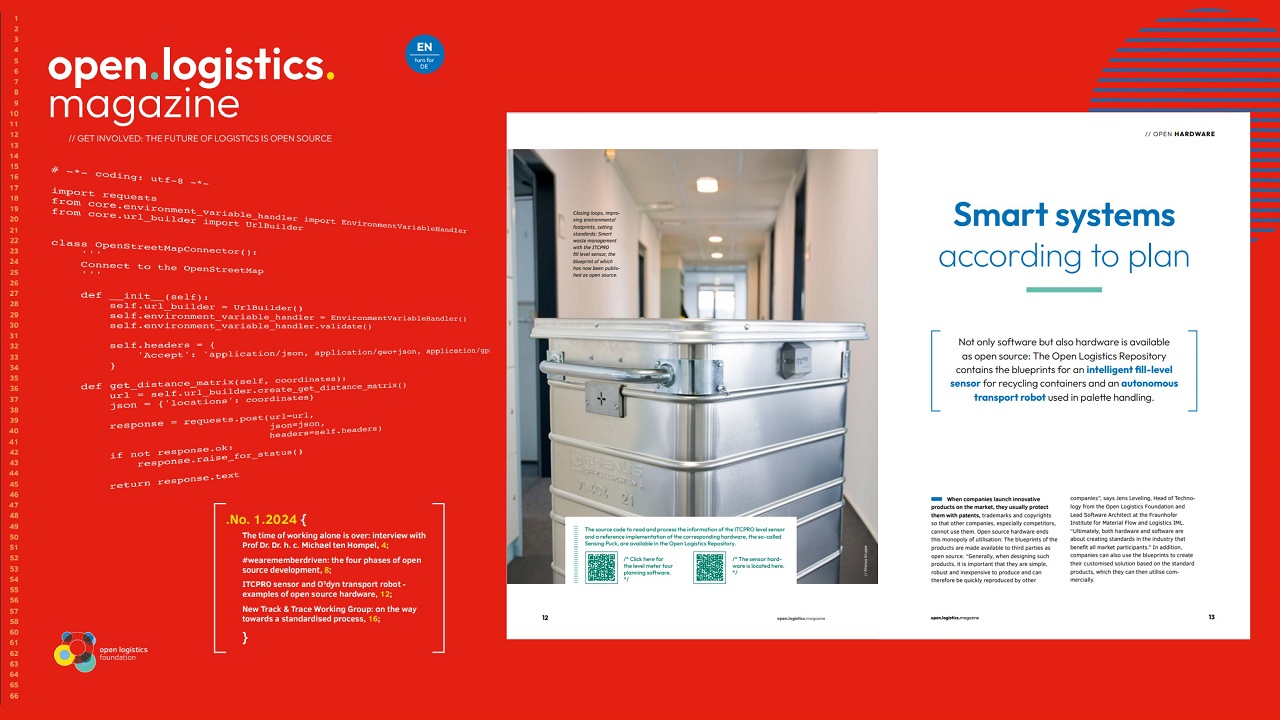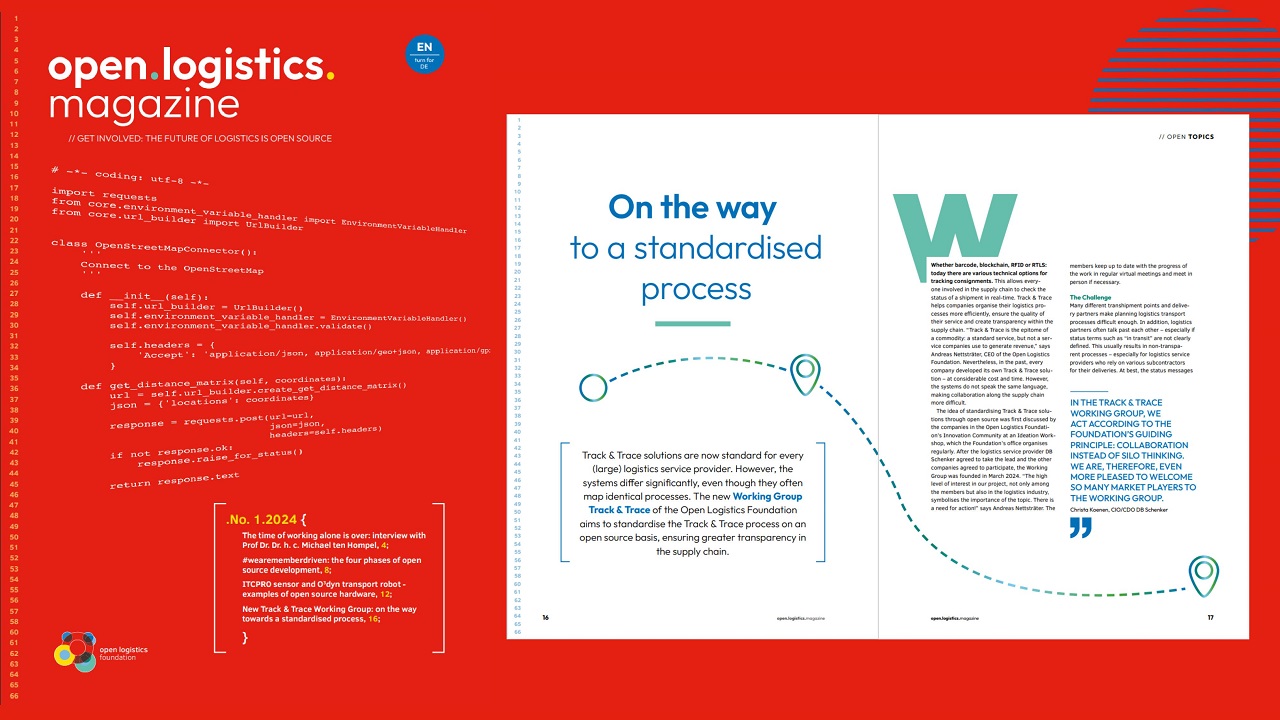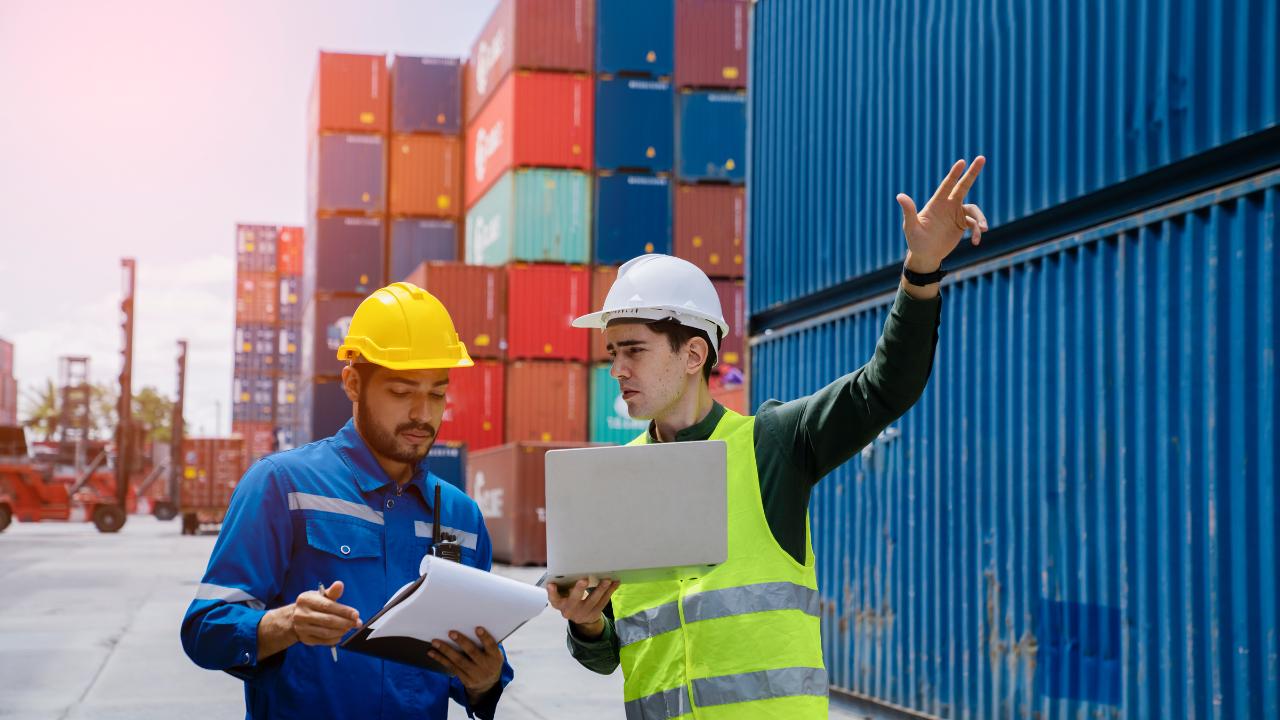In the past years and decades, the exchange of data in freight transport in Europe has hardly changed: Transport information is still predominantly recorded and controlled in paper form. However, with the adoption of Regulation 2020/1056, now known in logistics as the eFTI Regulation, three years ago, the European Union established a framework for the digital exchange of freight transport information between member state authorities and companies.
The digitalisation of transport information brings considerable benefits both to the state authorities responsible for controlling freight transport in the EU and to logistics companies. According to estimates by the European Commission, up to 27 billion euros can be saved in administrative costs in the transport sector alone over the next 20 years. These savings for logistics companies become tangible, for example, when freight transport is checked by competent authorities in the countries: The exchange, sifting and checking of paper documents still takes a lot of time today. In the future, however, if all relevant transport data is available at the click of a mouse, the checks can be carried out in a matter of minutes.

Advocates for a balance between small and large companies: Raoul Wintjes from the DSLV
The Federal Ass. for Freight Forwarding and Logistics Germany (DSLV) member of the Open Logistics Foundation, welcomes the eFTI Regulation for another reason: “When a truck – or any other means of transport – is involved in an accident, quick action is always required: Thanks to eFTI, the police and fire brigade will in future be able to call up all the data on the vehicle and its load with one click and initiate the right measures”, says Raoul Wintjes, Head of International Road Transport | Digitalisation at the DSLV.
Data exchange via certified eFTI platforms
For digital transport information to be exchanged securely and smoothly between authorities and logistics companies, a harmonised and trustworthy ICT environment is required. The member states of the European Union are already working at full speed on the technical implementation. The core issue is currently the architecture for data exchange. In principle, companies should in the future operate so-called eFTI platforms on which they store information relevant to the authorities. The authorities themselves will develop eFTI gates through which they can access the platforms. The eFTI Regulation states: “The use of eFTI platforms guarantees companies that the legally required information is accepted and provides the competent authorities with reliable and secure access to this information.” The law does stipulate that communication must take place via certified platforms. But it says nothing about what this certification should look like.
For logistics companies, this new construct basically represents an intervention in previous practice. At least the larger companies already have functioning software architecture for transport documents. Many therefore feel little inclination to introduce a new solution for which they must spend considerable internal resources or which they must purchase externally, for example, from software companies, at great expense. Raoul Wintjes from the DSLV therefore demands: “The implementation of the eFTI Regulation must be practicable for companies in logistics – regardless of their starting position. Since there are many small and medium-sized companies among the freight forwarders and logistics service providers in addition to the international groups. We therefore need a balance between large and small companies. No one should pay more!”
Logistics companies still have a time delay: the regulation only stipulates that the authorities must accept digital documents if the companies provide them. Initially, this applied from 2024, now from the end of 2025. However, there is (still) no obligation on the part of the companies to provide them. The principle of voluntariness currently extends at least until 2028.
THE PRACTICABILITY OF THE TECHNICAL IMPLEMENTATION WILL BE DECISIVE FOR THE SUCCESS OF THE EFTI REGULATION.
eFTI Regulation gives eCMR tailwind
However, companies that get involved in the process at an early stage have the opportunity to help shape the solution on the one hand and implement it at an early stage on the other. A current example of such an approach is the electronic consignment note in international cross-border road freight transport, one of many transport documents in logistics: “The eCMR makes everything easier for logistics,” says Dieter Sellner, Head of Digital Transformation at DB Schenker, also a member of the Open Logistics Foundation, “but at least the operational handling.” Whereas a freight forwarder today must wait until the truck driver submits the paper consignment note signed by the consignee on site before issuing the invoice for a transport, with the eCMR, the confirmation of receipt arrives in the accounting department in real-time. In addition to the simplification of handling, Dieter Sellner also sees the cost savings as playing a significant role in the electronic consignment note: according to expert calculations, a paper CMR costs 22.83 euros, while an eCMR costs just 9.72 euros.
The end of analogue waybills was already initiated in 2008 with the eCMR Protocol. The protocol supplements the 1956 agreement on the international carriage of goods by road (CMR). The more than 50 CMR members include not only EU countries but also states such as Albania, Iran, and Morocco. However, ratification of the protocol in the member states took several years. In 2015, only ten members had integrated the eCMR into their national law; in Germany, the eCMR Additional Protocol entered into force in 2022.
Admittedly, the eFTI Regulation does not cover the digitalisation of private-sector transport documents such as the eCMR. But it will give a boost to the introduction of the electronic consignment note, says Dieter Sellner: “eFTI will promote the creation of data standards, and reduce the complexity of the technical solutions to be created.” This can be achieved if all relevant transport information is bundled in one place – on the certified eFTI platforms at the companies – and can be used for a wide variety of purposes. According to Raoul Wintjes, there will then be a separate logistics file for each transport operation – comparable to a patient file in the healthcare system. This will ultimately make “minimally invasive controls” possible, as the Federal Office for Logistics and Mobility (BALM) in Germany appropriately puts it.
Keyword eFTI platform
An eFTI platform is an information and communication technology (ICT)-based solution for processing electronic transport information, e.g.
■ an operating system,
■ an operating environment or
■ a database.
One of the most important technical design principles here is that the data from companies also always remain with them (“shared by source) and are only made accessible to the authorities for the specific query.
OPEN SOURCE IS AN IMPORTANT LEVER FOR ENSURING THAT THE EFTI REGULATION IS ALSO IMPLEMENTED IN PRACTICE.
Open source ensures a uniform solution
The success of the implementation of the eFTI Regulation will not only depend on the member states of the European Union agreeing on a common approach, but also on logistics companies working together. The declared goal of all parties involved is to create compatible systems at a European level.
The eCMR approach can serve as a blueprint. In the Open Logistics Foundation project of the same name, 14 companies and organisations are currently working on the open source solution for the electronic consignment note. Free open source components make it possible for companies of all sizes to participate: no one is excluded. Because the basis remains the same even when companies adapt the solution to their logistical processes, the compatibility of data and applications and thus the formation of a de-facto standard is favoured at the same time. In any case, the digitalisation of the consignment note makes it easier for logistics to also meet the requirements for the new eFTI Regulation.

Assumes significant cost and efficiency benefits: Dieter
Sellner of DB Schenker
In the large-scale research project Silicon Economy of the Federal Ministry of Digital and Transport (BMDV), which is led by the Fraunhofer Institute for Material Flow and Logistics IML – one of the partners of the Open Logistics Foundation – the foundations for an open source solution are already being laid: Here, the exemplary implementation of an eFTI platform is taking place using the eCMR as an example. The electronic consignment note is to be expanded into an eFreight folder including an eFTI interface.
The German approach is not (any longer) a solo effort: In the eFTI4EU research project, nine EU countries have now come together to promote a common architecture – and to publish it as open source. An approach Raoul Wintjes from the Federal Ass. for Freight Forwarding and Logistics Germany (DSLV) also supports: “We need a clever concept so that existing solutions work with eFTI. Above all, we need interfaces so that every company can dock onto the eFTI gates. Open source is an important lever for eFTI to really spread.” Dieter Sellner from DB Schenker is also convinced that open source makes sense for the technical implementation of the eFTI regulation, because: “We don’t need 100 different solutions, but one.” Together, say the digitalisation experts from industry and the association in unison, they will lift the logistics industry to a new level of efficiency. The Open Logistics Foundation will play a central role in this.
eCMR vs. eFTI
The terms eFTI und eCMR are often mentioned in the same breath in logistics today. But they are two pairs of shoes – an overview.
| Electronic consignment note (eCMR) | eFTI Regulation | |
|---|---|---|
| Legal basis | Supplement of the 1956 Convention on the International Carriage of Goods by Road (CMR) by the eCMR Protocol in 2008 | Adoption of EU Regulation 2020/1056 in 2020 |
| Content | Legal equality of the electronic consignment note to the paperbased consignment note | Promote the digitalisation of freight transport and logistics services, acceptance of digital transport information by authorities |
| Category | Document | Data model |
| Scope of application | International, CMR member states | EU (all member states) |
| Mode of transport | Cross-border freight transport, road | (Cross-border) freight transport, all modes of transport |
| Exchange between … | … companies (Business-to-Business, B2B) | … companies and authorities (Business-to-Authorities, B2A) |
| Exchange of … | … information under private law from a contract between logistics companies (sender and carrier), but also with information carrier function for authorities | … information required by EU and national law for authorities in the transport of goods |
This article was published in the second issue of the Open Logistics Magazine. You can read the entire magazine and register for future editions here.




